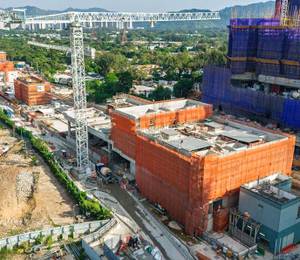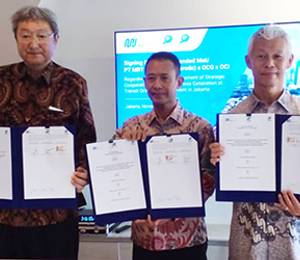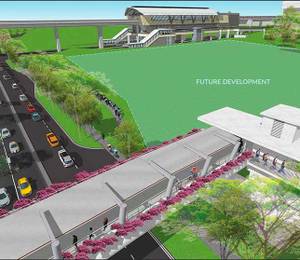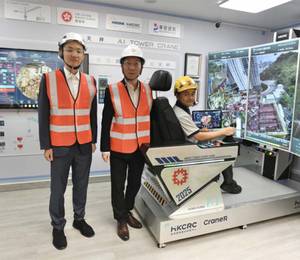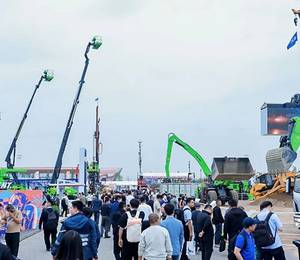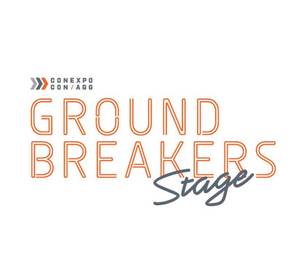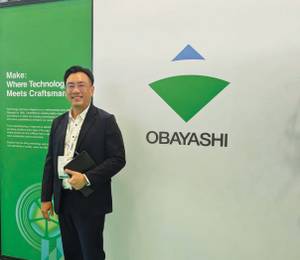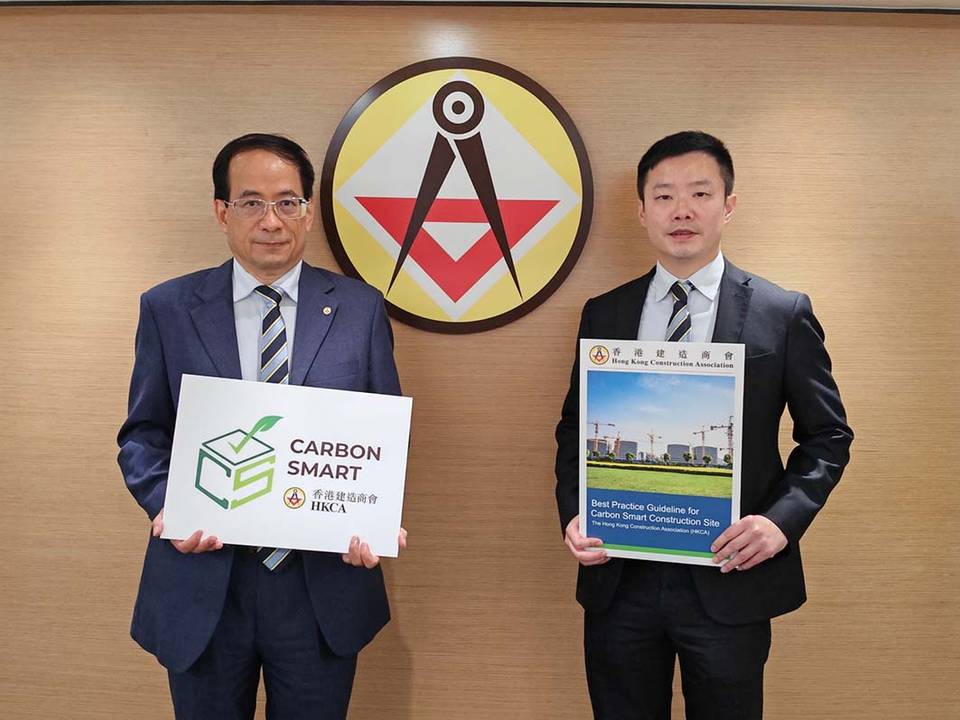The Hong Kong Construction Association (HKCA) has unveiled ‘Best Practice Guideline for Carbon Smart Construction Site’. This industry-first practical guide focuses on decarbonisation, assisting contractors in formulating carbon reduction strategies and optimising relevant processes. HKCA collaborated with the Business Environment Council Limited (BEC) to develop the guideline, introducing a ‘4M1E’ framework (Man, Machinery, Materials, Methods and Environment) which categorises 36 smart low-carbon measures.
With the support of Hong Kong Government (the Development Bureau and the Environmental Protection Department), the guideline provides a clear and sustainable development path for the industry, encouraging companies to implement them and collectively work towards the city’s 2050 carbon neutrality target.
Globally, over 30% of carbon emissions are related to construction activities. In Hong Kong, some progress has been made in carbon reduction, with carbon emissions in 2020 being approximately one-fifth lower than 2005 levels. Facing the challenges of climate change, the government has set a target to reduce carbon emissions by 26% to 36% by 2030. As a key stakeholder in the local construction industry, HKCA actively responds to this goal, promoting industry progress by launching the guideline to help contractors adopt low-carbon technologies and operational methods, achieving a green transformation.
“The HKCA has always been committed to promoting the sustainable development of the construction industry, and the newly launched guidelines are a concrete action reflecting our commitment to developing low-carbon sites,” said Simon Liu, president of HKCA. “Reflecting the perspective of contractors, the guidelines provide practical low-carbon construction solutions, covering aspects such as construction processes and material selection.
“We are pleased that the guidelines have received active support from government departments such as the Development Bureau and the Environmental Protection Department, as well as various industry stakeholders. We hope that by sharing these strategies, we can encourage the industry to adopt innovative technologies and sustainable methods, contributing jointly to Hong Kong’s carbon neutrality target.”
The guideline elaborates on the 36 smart low-carbon measures under the 4M1E framework, categorised by practicality, carbon reduction impact and applicable project types, making it convenient for the industry to flexibly select measures based on their specific projects. It covers several key areas:
A). Manpower (Man) – it encourages the use of digital management platforms and building information modelling (BIM) to optimise decision-making and processes.
B). Machinery – it promotes the application of electric construction machinery and temporary power supply, reducing reliance on traditional diesel generators.
C). Materials – it advocates the use of low-carbon concrete and recycled materials.
D). Methods – it introduces digital material management systems, prefabrication technology and mixed reality platforms to enhance efficiency and reduce waste.
E). Environment – it promotes the adoption of renewable energy systems and site wastewater recycling measures to reduce the impact on the surrounding environment.
Anthony Chan, honorary secretary of HKCA, explained, “The guideline is not merely a theoretical reference document, but a practical action guide. By collecting successful cases, we assigned ‘carbon reduction tokens’ to each measure based on its carbon reduction impact: high, medium and low impact measures received 3, 2 and 1 token respectively.
“This quantitative method not only helps contractors understand the benefits of each measure but also provides an objective and fair basis for evaluation, effectively encouraging more industry companies to actively participate and put the smart carbon reduction measures in the guideline into practice.”
To further promote and recognise the implementation of strategies from the guideline, HKCA has launched the Carbon Smart Construction Site Labelling Scheme. This initiative aims to commend sites that demonstrate outstanding performance in carbon reduction. The label scheme quantifies the carbon reduction impact of each measure according to the guideline and scores them with ‘carbon reduction tokens’: high-impact measures receive 3 tokens, medium-impact 2, and low-impact 1.
A site must accumulate at least 15 carbon reduction tokens (approximately 20% of the total tokens) to be awarded the label. The scheme is applicable to civil engineering, foundation engineering and building construction projects undertaken by HKCA members, with one application per site. Sites awarded the label will receive one year of recognition and will be reviewed annually to ensure their continued compliance with carbon smart practice standards.
The ‘Best Practice Guideline for Carbon Smart Construction Site’ is now available for free download on the HKCA website. Additionally, the Carbon Smart Construction Site Labelling Scheme has begun accepting applications (starting from 23 September 2025), with a rigorous approval process. Applicants must submit relevant information, which will undergo preliminary review by the HKCA Secretariat before being submitted to an independent judging panel comprising representatives from HKCA, the Development Bureau, the Environmental Protection Department, and third-party consultants for evaluation and final decision on label conferment.
